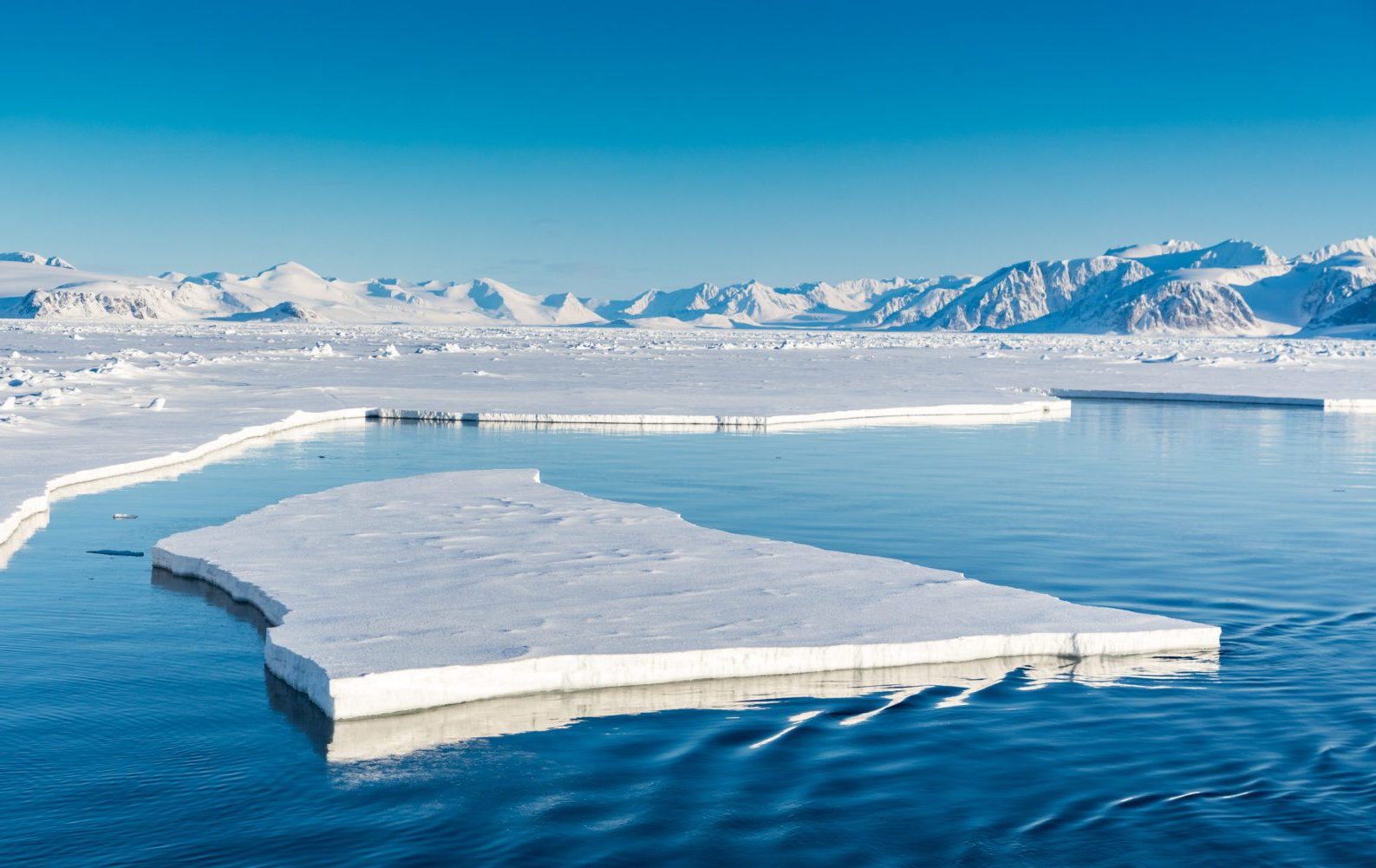Arctic Fever
A new book makes a strong case that Russia’s Arctic policy does not present a growing geopolitical danger.

Red Arctic: Russian Strategy Under Putin, by Elizabeth Buchanan, Brookings Institution Press, 224 pages.
Vladimir Putin's approach to the Arctic has long been a source of worry and conjecture. In Red Arctic: Russian Strategy Under Putin, Elizabeth Buchanan, non-resident fellow at the Modern War Institute and 1st Sea Lord FVEY fellow, contends that Russia is not a growing geopolitical threat in the north but instead seeks cooperation with the other members of the Arctic Five: the United States, Canada, Denmark, and Norway.
Much of the media attention paid to the Arctic great game portrays Russia as an aggressor, and Buchanan notes how news outlets use clickbait titles to entice readers to read extreme and incorrect Arctic analyses. Buchanan writes, “The misreading of Russian Arctic strategy has a lot to do with residual Cold War geopolitical storylines.” Indeed, one of the most pervasive myths about the region north of the Arctic Circle is that countries are attempting to militarize and rule the area. Buchanan refutes this: “Maintaining conflict-free Arctic transit routes such as the Northern Sea Route (NSR) is crucial to delivering energy exports to Asian and European markets” for Russia and the rest of the Arctic Five. The majority of the refurbished military outposts in the Arctic serve as dual-use locations for local search-and-rescue operations. Russia’s military aspirations in the region are limited, primarily driven by three objectives: establishing its sovereignty over the continental shelf, defending economic interests, and demonstrating that it still possesses great power status.
Russia’s Arctic strategy is frequently misunderstood because the Arctic is frequently seen as a region like any other region. Buchanan contends that this is untrue, writing, “Moscow’s cooperative approach to the Arctic, and indeed the absence of conflict in Russia's Arctic agenda itself, deviates from the way in which Russia views energy and uses it as a weapon elsewhere.” A source from the Russian government shared this opinion, saying, “Georgia, Ukraine, and the Arctic are all very separate areas of conduct...we have shown adherence to UNCLOS in the Arctic and will continue to do so.” Russia has had a cooperative past in the Arctic, too. Gorbachev advocated for the establishment of the Northern Sea Route (NSR), a nuclear-free zone, limitations on naval military operations, cooperative resource development, coordinated scientific research, and environmental cooperation, among other things. Any attempt to apply Moscow's muscular foreign policy in the Middle East or Eastern Europe to the Arctic region is therefore likely to produce strategic fog.
It is crucial to recognize instead that much of Russia’s activities in the Arctic is the legitimate business of governing. Rather than a desire for geopolitical dominance, Russia’s Arctic strategy is driven by economic considerations. The Arctic region is thought to hold 20 percent of the world's untapped oil and gas reserves, and Russia is the world’s largest producer of natural gas. Other natural resources, such as fish and minerals, are also abundant in the area. Russia has substantial economic interests in the Arctic as a result, and an interest in supervising and managing them. As Buchanan notes, “The Kremlin hopes to create a new Arctic economy focused on shipping, infrastructure, and resource extraction, all of which could create jobs and promote economic development in the country's northern regions.” Additionally, as part of its commitment to safeguarding the region's ecosystem, Russia has taken action to encourage environmental cooperation in the Arctic. For instance, Russia has acted to decrease greenhouse gas emissions from its Arctic operations and accepted the Paris Agreement on climate change.
One aspect of Russia's Arctic strategy that often goes unnoticed is its focus on developing and expanding its infrastructure in the region. In recent years, Russia has invested heavily in building new ports, airports, and other logistical facilities to support its growing economic activity in the Arctic. For example, the port of Murmansk has been expanded and modernized to handle increased traffic from cargo ships and oil tankers, while new airports have been constructed to serve remote communities and facilitate the transportation of goods and people across the vast Arctic landscape.
Subscribe Today
Get daily emails in your inbox
Furthermore, Russia has been investing in research and innovation in the Arctic. The country has a long history of Arctic exploration and has amassed a wealth of scientific knowledge about the region's unique ecosystems, climate, and geology. Today, Russia is home to numerous research institutions and universities that specialize in Arctic studies, and the country is actively promoting the development of new technologies and innovations to help it better understand and manage the challenges of operating in this harsh and remote environment.
To be clear, there is still a debate among experts as to whether Russia represents a military threat in the Arctic region. But according to the Swedish Defense Research Agency, Russia's buildup in the Arctic is primarily aimed at defending its borders and ensuring access to its natural resources. Furthermore, cooperation between Russia and other Arctic nations, such as the United States, has continued despite political tensions, indicating a shared interest in maintaining stability in the region. In fact, the U.S. Navy has participated in joint training exercises with Russia in the Arctic, demonstrating the potential for cooperation despite disagreements in other parts of the world.
Red Arctic: Russian Strategy Under Putin makes a strong argument that Russia’s Arctic policy does not present a growing geopolitical danger. Instead, Russia’s military efforts in the Arctic, such as the upgrading of military outposts, are intended to show off its military prowess, safeguard its economic interests, and establish its sovereignty over the continental shelf. Overall, Buchanan’s book offers a nuanced picture of Russia’s Arctic policy that differs from the widely held Cold War hangover view. Better understanding each of the Arctic Five’s approach and goals is essential as the region assumes greater significance for both global security and commercial interests.